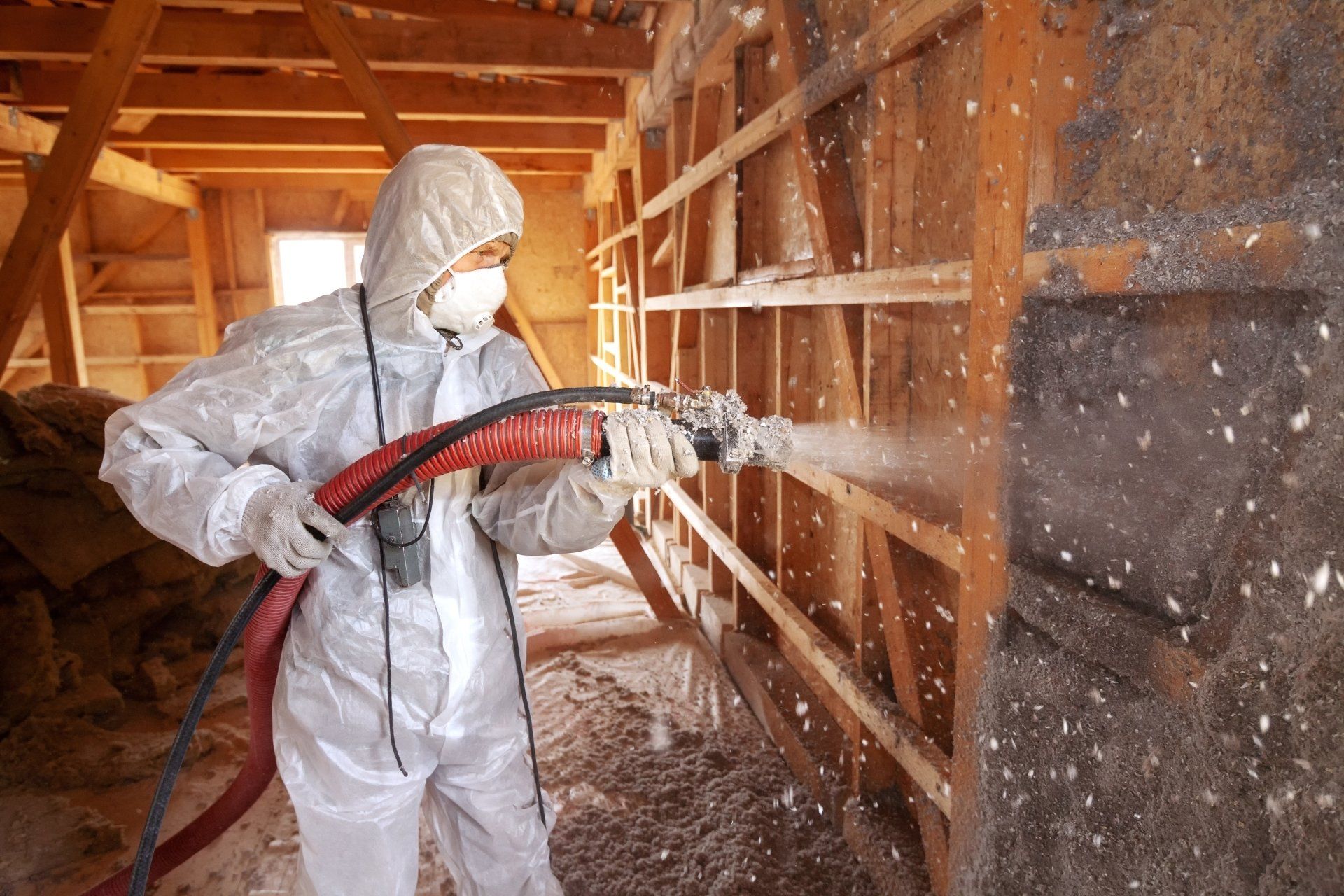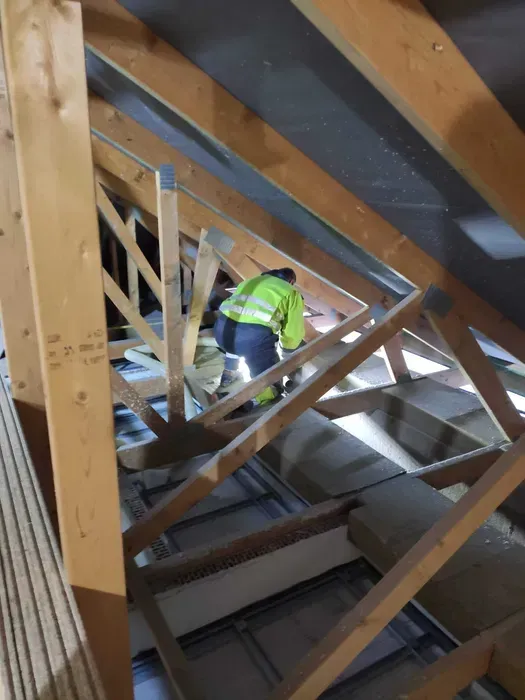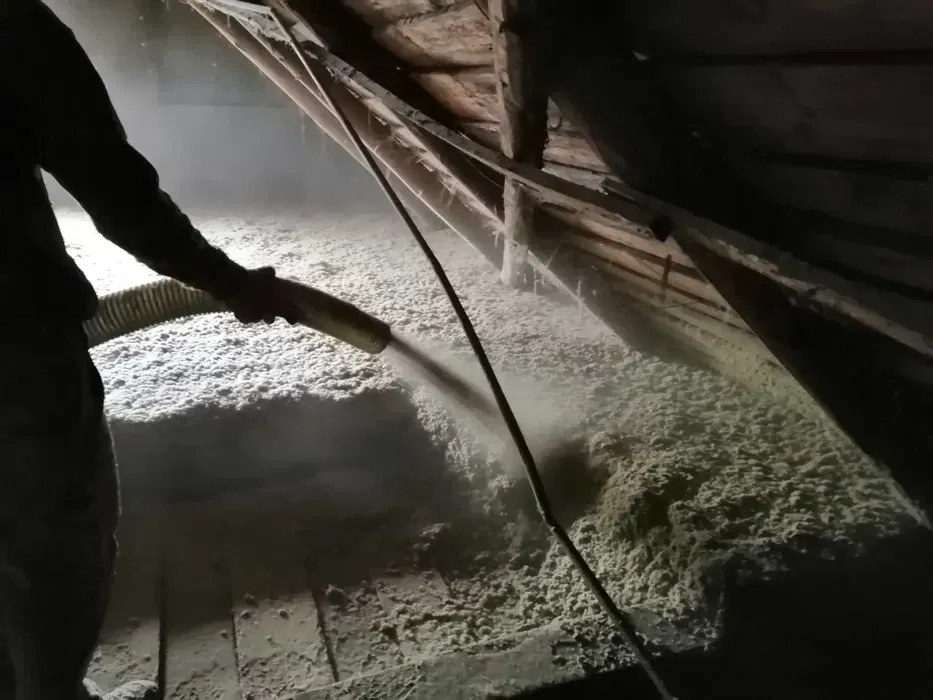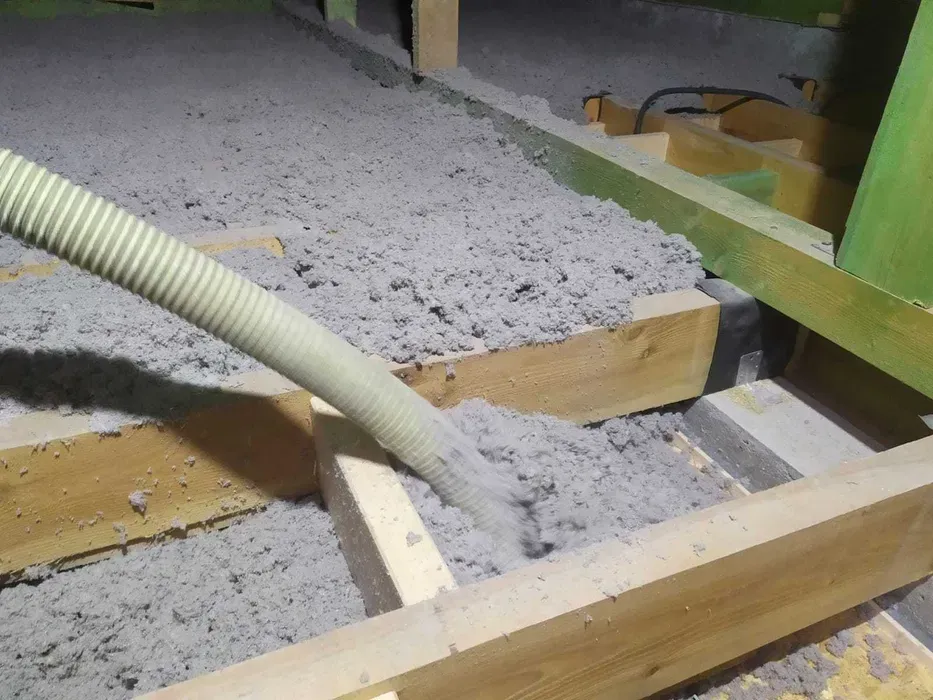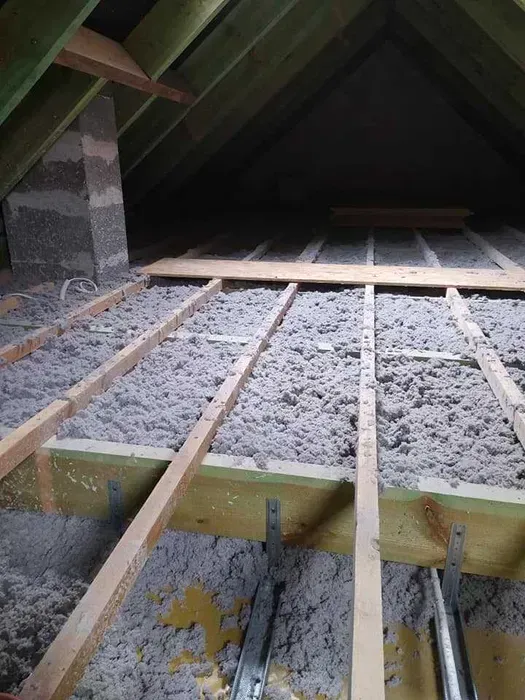insulation with blowing wool
Advantages of blowing wool:
This is a seamless heating solution
When a solid insulation layer is formed.
It is easy to fill even the smallest cracks with quality
We work with glass wool, stone wool, eco wool (from recycled paper) and wood fiber wool
Easy to install and customize
For different shapes or different thickness of the warming layer.
There are different types of wadding to choose from
Having different properties.
Wool is not only a way to insulate the house with quality, but also an opportunity to reduce the noise level
For example, when building a house with a tin roof, it is recommended to insulate the roof with wool so that it absorbs the noise during rain and does not transfer to the lower floors of the house.
we will make sure that your home becomes: Cozy, Economical and Warm.
Insulation with blowing wool: a good solution for your home.
Ceiling insulation with wool, ceiling insulation with eco-wool...
Warming with bulk cotton wool is an easily and quickly installed method of warming. It does not leave waste, fills all cavities well and forms a solid insulation layer. Most often, this technology is used in the following areas:
- Roof insulation - Loose wool is perfect for insulating pitched or flat roofs, as it can cover all roof cavities evenly, filling the voids between the rafters.
- Wall insulation - Especially suitable for frame constructions or for insulation of hollow walls, where wool fills perfectly.
- Floor insulation - can be used to insulate ceilings or floors above the basement in order to ensure good insulation and reduce heat loss.
- Insulating attics, ceilings and ceilings - Used to insulate attic floors or ceilings when it is necessary to fill cavities between beams or other structural elements.
- Hard-to-reach places - Loose wool is especially useful for warming places with uneven surfaces or those spaces where it is inconvenient to work with sheet insulation (eg between pipes, recovery ducts, cables, etc.).
- For facade insulation - Ekovata covers all the unevenness of the wooden facade made of logs in a dry and wet way.
- For warming the air gap - When filling it, loose eco-wool is poured evenly, from the outside, by drilling holes in the brick facade. We even fill the second air gap from the outside, if there is one.
In addition, different insulation materials can be chosen according to wishes and possibilities. How are they different? When is it best to choose one or the other? Better insulation of a wooden floor with stone wool? Or maybe a better roof insulation with eco-cotton? What about the ceiling? Walls? Contact us and we will answer all your questions!
Find out the price and terms of insulation.
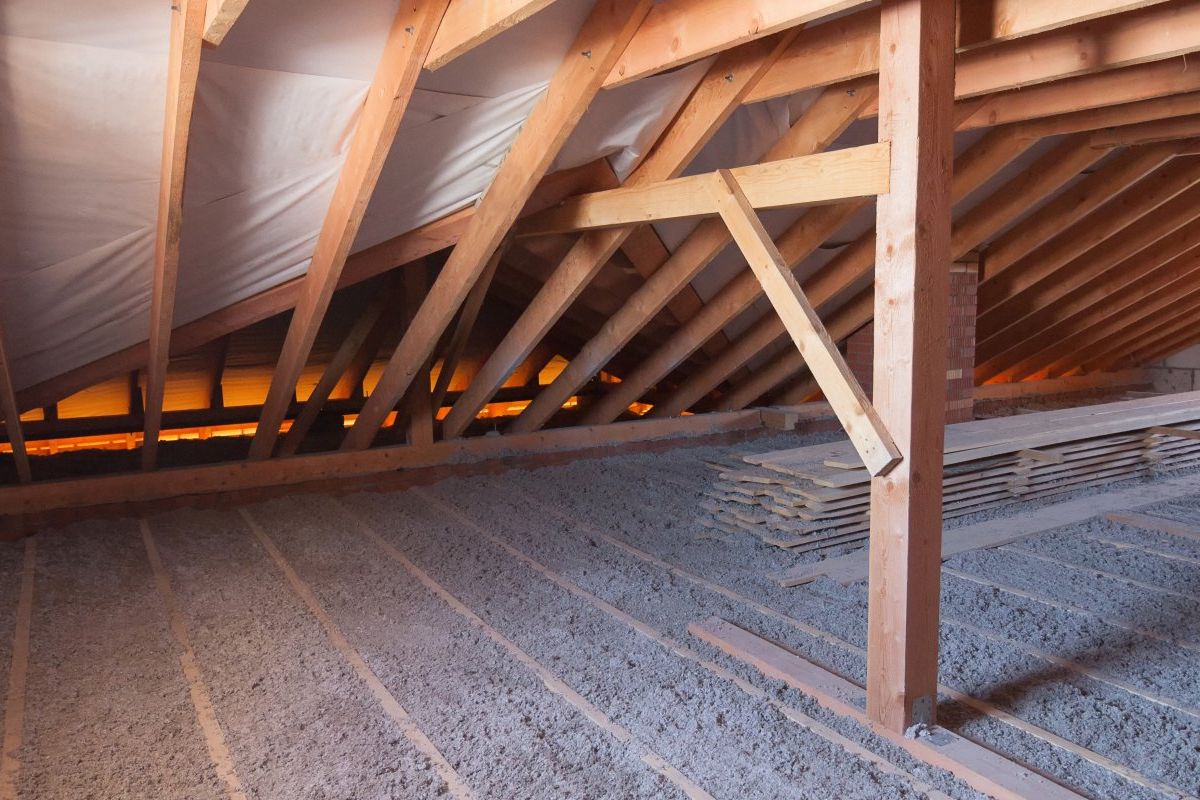
Rock wool insulation in various building structures.
Rock wool insulation of walls, ceiling and roof.
One of the most popular wools chosen for insulation is stone wool. It is a type of mineral wool, produced from secondary mineral raw materials. This wadding restricts the movement of heat, so it protects your home in both winter and summer. In winter, it does not allow heat to be released outside, and in summer, the house warms up quickly.
The wool is dense, and the fibers arranged in different directions provide good sound insulation. For these reasons, PAROC insulation, ROCKWOOL wool, as well as shelter insulation (especially in the case of a tin roof, which can be "noisy" when it rains) are very popular. Insulation of ceilings and floors with stone wool is a good and practical choice.
Ecowool is non-flammable, it emits almost no smoke during a fire. Of course, nobody wants to think about possible disasters when building a house, but you will live more calmly if you know that the house is built from the safest possible materials. Insulating a wooden floor with stone wool is a good solution for those who are renovating or building a wooden house.
It is an ecological choice: compressed air or steam is used in the cotton production process. In addition, insulating the ceiling with rock wool will be a very good solution if you want a quiet house where the sound is transmitted from one floor to another as little as possible.
Another solution of insulation is mineral (glass) wool.
Loose mineral wool KNAUF, ISOVER, URSA is chosen where they are not affected by the load of other structural elements. This wool can be blown and used to insulate ceilings, suspended ceilings, and floors. Overlay insulation with cotton wool allows to ensure not only thermal properties, but also to reduce the noise level.
Glass wool is made from natural raw materials, it does not contain chemical binders, so this wool meets the strictest health safety requirements. Glass wool is popular because it is relatively light compared to other insulation materials.

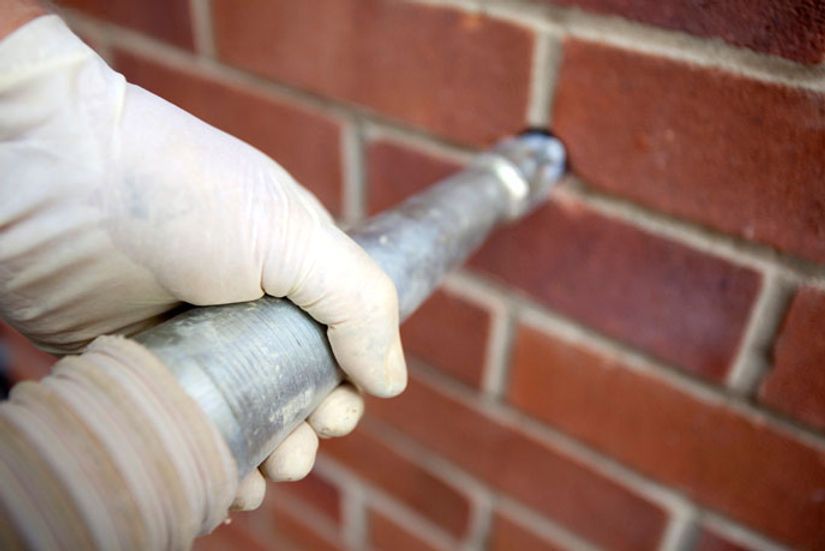
Looking for greener solutions for your home?
You might like ecowool or wood fiber wool
More and more people are choosing a more environmentally friendly lifestyle. Sure, it's good to choose a reusable bag or ditch single-use straws, but these are small things compared to how much impact the choice of building materials can have on nature. It is good that there are greener heating solutions on the market. We work with all types of wool, regardless of the manufacturer, whether it is eco wool or wood fiber wool.
Ecocotton (or cellulose cotton) is made from waste paper and various salts. Basically, it's recycled newspapers that can insulate your home. Overlay insulation with ecowool is a good choice not only for ecology, but also for the ability of this wool to absorb moisture and gradually evaporate it. This can help control humidity levels in the building. In addition, cotton wool contains antiseptics that help protect the wooden structures of the building from rot, mold and rodents. Wall and ceiling insulation EKOWOOL, BRIKO, BALTICFLOC, WERROWOOL, ISOFLOC, THERMOFLOC, ecowool - a good choice for those looking for an ecological solution.
Biri Ekwata is an excellent and ecological choice. This wadding does not transmit heat or sound. It is perfect for warming ceilings, walls, ceilings, and floors. It is a "breathable" material, so it is perfect for warming wooden coverings and structures.
Frequently asked questions
-
Where can you use loose eco cotton?
Loose wool can be used in a variety of building elements, including walls, roofs, floors, ceilings, air gaps.
-
Why should you use bulk wool for thermal insulation?
Bulk wool is a natural thermal insulation made from natural materials such as cellulose, cotton or linen. It is environmentally friendly, well insulated from heat, sound and is fire resistant.
-
How does bulk cotton cope with moisture and mold?
Bulk wool is quite resistant to moisture and mold. However, it is important to ensure proper installation and ventilation.
-
How long does it take to install bulk wool?
Installation time depends on the scope of work. However, the installation of ecowool itself is a quick process, preparatory or sealing work takes longer.
-
How to choose the right type of bulk cotton?
The choice depends on the specific requirements of the project. It is important to take into account the required thickness of the thermal insulation and its other operating characteristics.
-
Heating bulk wool price?
The price of heating depends on the quantity, the type of structure to be insulated, and the type of insulation material. Get in touch and it will all be arranged.
-
Wall, roof, ceiling or house insulation with bulk wool: Klaipeda, Kaunas, Vilnius, Siauliai, Panevėžys?
Regardless of our location, we carry out work in various Lithuanian cities.
Fields of application of heating bulk wool:
From B to A efficiency class
Insulation requirements to meet the class provided in the project.
Bulk wool for insulation of the roof, ceilings, walls and floors.
| Construction type | Class B (R) | Class A (R) | A class (R) | A class (R) |
|---|---|---|---|---|
| Roof, covering | 6,67 | 7,14 | 8,33 | 10 |
| Siena | 5,56 | 6,67 | 7,69 | 9,09 |
| The floor | 4,55 | 6,25 | 7,14 | 8,33 |
Energy efficiency requirements of residential buildings for thermal resistance, R=dλ (heated thickness / thermal conductivity coefficient), m ²·K/W
Find out the price and terms of bulk wool insulation
Submit a request or call the given phone 370 605 44492
We are here to help you.
EXAMPLES OF PERFORMED WORKS
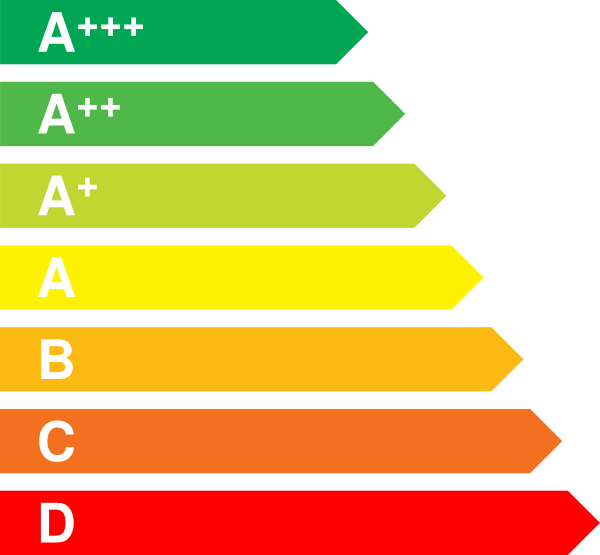
Free consultation!!!
If we are not able to give you an offer right away, due to missing information or circumstances in the object - SOLUTION, we will come to you at the agreed time for an inspection in order to provide an accurate price or estimate.








